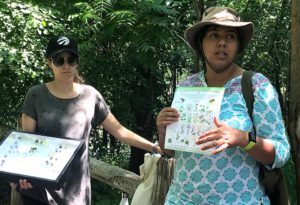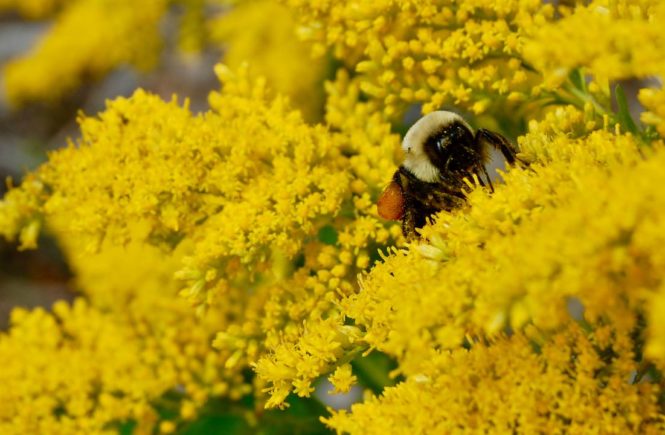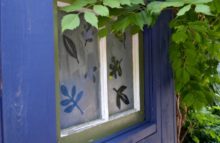This summer I talked to wild bee expert Sheila Colla, a scientist from York University, about wild bees and what we as gardeners can do to help them. One of the first things Sheila made clear was that wild bees are native bees and we must make a dis
tinction between them and honeybees, which are
not native to North America. (More on this on a subsequent post.)

, giving a talk on wild bees at Evergreen Brick Works.
What Can Gardeners Do To Help Wild Bees?
What to plant
Goldenrod and willow are key: Make sure you plant them. Sheila told me that pollen plants that bloom very, very early—like pussy willows and other willow varieties—and plants tha
t bloom very late and into the fall—like goldenrod—are crucial to bee survival.
In midsummer, the floral banquet is overflowing with pollen plants, but the edges of the seasons are where bees’ food needs are less served. So make sure you have
them in your garden. It can mean life or death for a hungry wild bee.
There are many different kinds of willows and goldenrod to plant. Pussy willow (Salix discolor) and native Canada goldenrod (Solidago canadensis) are good places to start.
How to create a wild bee habitat
Leave open areas of soil in your garden, especially on a slope that faces south. Don’t mulch here! Many wild bees are ground nesting and burrow into the soil to make their homes.

When cutting down perennials, wait till spring and don’t cut right to the ground. Leave 8 to 10 inches of any hollow stemmed perennial. They make natural bee houses, one you don’t have to buy from the hardware store.
Shrub expert Sean James told me he breaks the rules of pruning by making a habit of leaving some nubs of several inches on his hollow stemmed elderberries when pruning, to provide bee homes. (Instead of trimming right to a branch as proper pruning techniques tell us.)
Give Bees a Place to Drink
Leave shallow dishes of water, filled with pebbles or marbles, to allow bees to have a drink without drowning.
Holes on your Leaves means Habitat Success!
Perfectly cut holes on your leaves are evidence that you are providing a leaf-cutter bee with a good habitat. A few perfectly round holes don’t kill the rose.
My sister, Helen, always s
miles with approval when she sees the evidence the carpenter bees that make their home on her garden shed. As she says, “I’m a bee-leaver.”





4 comments
If anyone is worried about leaving goldenrod in a garden because of seasonal allergies, according to this site at least, the real culprit is ragweed. So weed out any ragweed and leave the goldenrod for the bees. See pictures of these plants at
https://www.mnn.com/health/allergies/stories/dear-allergy-sufferers-dont-blame-goldenrod
We also have ceiling-high white asters blooming with bees. Chokecherries are also an all round pollinator plant and food for wildlife along with dogwood trees/20′ and viburnum.
Great info in your column. I planted goldenrod at Bellefair United Church in the 90s and we had Monarchs going overhead every minute and a half.
Great info on the need for early spring and late fall pollen plants to support the bees-thank you. Looking forward to your subsequent post on wild bees versus honeybees.
Bluestem Goldenrod is a nice goldenrod with arching stems growing about 3′ high. A nice alternative to the tall species usually thought of. I’m adding some stiff goldenrod this fall, but it’s been tough to find a willow species that’s a good fit for our garden. They want full sun, lots of moisture, and tend to be big and aggressive.